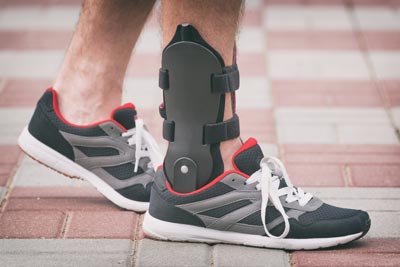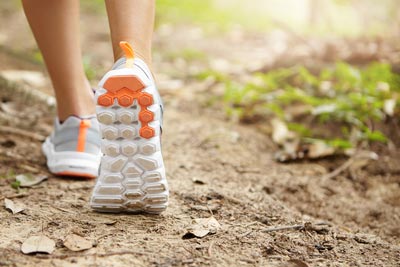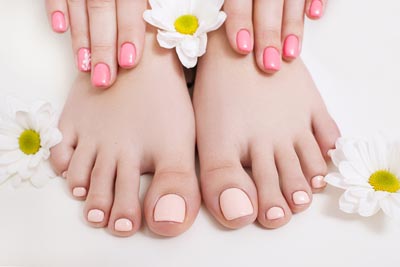The Importance of Proper Footwear and Foot Care in Maintaining Foot Bone Health
Our feet are the foundation of our daily lives. They carry us through countless activities, from morning jogs to evening strolls. Yet, they are often the most neglected part of our bodies. Proper foot care and the right proper footwear maintaining foot bone health. In this blog post, we’ll explore why foot health is essential, how to choose the right shoes, and how to establish a daily foot care routine.
The Anatomy of the Foot
The foot is a complex structure composed of 26 bones, 33 joints, and over 100 muscles, tendons, and ligaments. These elements work in harmony to provide support, balance, and mobility. The foot can be divided into three main sections: the forefoot, the midfoot, and the hindfoot.
- The Forefoot: The forefoot consists of the five toes (phalanges) and their connecting long bones (metatarsals). It plays a critical role in maintaining balance and bearing weight as we walk or run. Proper toe alignment and metatarsal support are crucial for preventing conditions such as bunions and metatarsalgia.
- The Midfoot: The midfoot contains a collection of five tarsal bones that form the arches of the foot. These arches act as natural shock absorbers, dispersing the body’s weight evenly across the foot. Ligaments and tendons in the midfoot area provide stability and support, reducing the impact on the forefoot and hindfoot. Proper arch support is vital to maintaining this natural shock-absorbing function.
- The Hindfoot: The hindfoot comprises the heel (calcaneus) and the ankle (talus). The calcaneus is the largest bone in the foot and plays a significant role in weight-bearing and absorbing the initial impact while walking or running. The talus connects the foot to the lower leg bones, facilitating smooth ankle movements. Adequate support for the hindfoot, particularly the heel, is essential to prevent stress fractures and conditions like plantar fasciitis.
By understanding the intricate anatomy of the foot, we can better appreciate the importance of proper footwear and foot care. Well-fitting shoes that offer adequate support to all parts of the foot are essential for maintaining foot bone health and preventing injuries.

Proper Footwear For Foot Care
Common Foot Problems
Understanding common foot problems can help in taking preventive measures and seeking appropriate treatment when necessary. Here are some of the most prevalent foot issues that individuals may encounter:
- Bunions: Bunions are bony bumps that form on the joint at the base of the big toe. They develop when the big toe pushes against the next toe, forcing the joint to protrude. This condition can cause significant pain and swelling and may lead to restricted movement in the big toe.
- Plantar Fasciitis: Plantar fasciitis is an inflammation of the plantar fascia, a thick band of tissue that runs across the bottom of your foot and connects your heel bone to your toes. This condition typically causes stabbing pain in the heel, especially in the morning or after prolonged periods of rest.
- Achilles Tendonitis: Achilles tendonitis occurs when the Achilles tendon, which connects the calf muscles to the heel bone, becomes irritated or inflamed. This condition is common among runners and individuals who engage in activities that involve repetitive stress on the tendon, leading to pain and stiffness along the back of the leg near the heel.
- Hammertoes: Hammertoe is a deformity that causes one or more of the toes to bend or curl downward instead of pointing forward. This condition often results from an imbalance in the muscles, tendons, or ligaments that normally hold the toe straight, leading to pain and difficulty wearing shoes.
- Metatarsalgia: Metatarsalgia is characterized by pain and inflammation in the ball of the foot. It often occurs due to overuse or high-impact activities, as well as wearing poorly fitted shoes that do not provide adequate support. Symptoms include sharp, aching, or burning pain in the ball of the foot.
- Stress Fractures: Stress fractures are tiny cracks in a bone, often occurring in the weight-bearing bones of the foot. They usually result from repetitive force or overuse, especially in athletes or individuals who suddenly increase their activity levels. Common symptoms include pain, swelling, and tenderness in the affected area.
By being aware of these common foot problems, individuals can take proactive steps to prevent them. Wearing appropriate footwear, performing regular foot exercises, and maintaining good overall health are key strategies for avoiding these issues and ensuring long-term foot bone health.
The Role of Footwear
Wearing the right footwear is essential for maintaining the health and functionality of the foot’s intricate structure. Proper footwear helps in distributing weight evenly, providing necessary support, and guarding against various foot conditions. Here are some key considerations when choosing footwear to support foot bone health:
- Support and Cushioning: Footwear with adequate support and cushioning is crucial for absorbing impact and reducing stress on the foot’s bones and joints. Look for shoes with good arch support, which can help distribute pressure evenly across the foot, preventing conditions like plantar fasciitis and metatarsalgia. Cushioned insoles can also provide additional comfort and shock absorption, reducing strain on the forefoot and hindfoot.
- Proper Fit: A proper fit is fundamental in preventing foot problems. Shoes that are too tight can cause issues such as bunions and hammertoes, while shoes that are too loose can lead to instability and an increased risk of stress fractures. Ensure there is enough room in the toe box to wiggle your toes comfortably and that the heel fits snugly without slipping.
- Activity-Appropriate Footwear: Different activities place varying demands on your feet, so wearing activity-appropriate footwear is essential. Running shoes, for example, are designed with enhanced cushioning and support for high-impact movements, while hiking boots offer stability and traction for uneven terrains. Wearing the right shoes for each activity can help prevent injuries and improve overall performance.
- Material and Construction: The materials and construction of shoes also play a significant role in foot health. Breathable fabrics can help reduce moisture buildup, decreasing the risk of fungal infections. Durable outsoles provide stability and traction, reducing the risk of slips and falls. Additionally, shoes with a flexible midsole allow for natural foot movement, while those with a firm midsole offer more support.
- Regular Replacement: Even the best shoes wear out over time and must be replaced regularly to maintain their support and cushioning properties. As a general rule, athletic shoes should be replaced every 300-500 miles, while everyday shoes may need replacing once they show significant wear on the soles or lose their structural integrity.
By prioritizing the selection of appropriate footwear, individuals can significantly enhance their foot bone health, reducing the risk of injury and ensuring comfort throughout their daily activities.

Proper Footwear for Feet
Tips for Choosing the Right Footwear
Selecting the right footwear is a critical step in maintaining optimal foot bone health and preventing common foot problems. Here are some tips to help you choose the best shoes for your needs:
- Assess Your Foot Type: Understanding your foot type is essential when selecting footwear. Identify whether you have flat feet, high arches, or a neutral arch. Various foot types require different levels of support, so choose shoes that cater to your specific needs. For instance, individuals with flat feet may benefit from shoes with robust arch support, while those with high arches might need additional cushioning.
- Measure Your Feet Regularly: Feet can change size over time due to factors like aging, weight fluctuations, and pregnancy. Have your feet measured regularly, ideally at the end of the day when they are at their largest. Ensure that both length and width are measured, as some people may require wider shoes for a comfortable fit.
- Try on Shoes with the Correct Socks: When shopping for shoes, bring along the type of socks you plan to wear with them. This ensures a more accurate fit, especially for activities that require specific socks, like running or hiking. Thick, cushioned socks can affect the fit and feel of the shoes.
- Prioritize Comfort Over Style: While stylish shoes can be appealing, comfort should be the primary consideration. Focus on how the shoes feel on your feet rather than their appearance. A well-fitting pair of shoes can prevent a myriad of foot problems and ensure better overall foot health.
- Test Shoes Thoroughly: Take your time to walk around the store in new shoes to assess their comfort and fit. Pay attention to any areas that feel tight, loose, or uncomfortable. Additionally, check for adequate toe room and ensure that your heel does not slip out of the shoe while walking.
- Check for Quality Construction: Examine the shoes for quality construction, including sturdy stitching, durable materials, and a supportive sole. High-quality shoes tend to offer better support, last longer, and provide a more comfortable fit, making them a worthwhile investment.
- Consider Podiatrist Recommendations: If you have specific foot conditions or concerns, consider seeking advice from a podiatrist. They can provide personalized recommendations on the type of footwear that will best suit your needs, including custom orthotics if necessary.
By following these tips, you can choose footwear that supports and protects your feet, ensuring comfort and reducing the risk of foot-related issues. Remember, the right shoes can make a significant difference in maintaining healthy feet throughout your life.
Daily Foot Care Routine
A consistent daily foot care routine is essential in maintaining healthy feet and preventing various foot problems. Here are some steps to incorporate into your daily regimen:
- Clean Your Feet Thoroughly: Make it a habit to wash your feet daily using lukewarm water and a mild soap. Pay special attention to the spaces between your toes. Thorough cleaning helps remove dirt, sweat, and bacteria, reducing the risk of infections.
- Dry Your Feet Carefully: After washing, ensure you dry your feet thoroughly, especially between the toes, where moisture can accumulate and cause fungal infections like athlete’s foot. Use a soft towel and be gentle to avoid skin irritation.
- Moisturize Regularly: Keep your feet hydrated by applying a moisturizer every day. Choose a lotion or cream specifically designed for the feet, as they tend to be thicker and more effective. Avoid applying moisturizer between the toes to prevent excessive moisture buildup.
- Inspect Your Feet Daily: Take a moment each day to inspect your feet for any signs of blisters, cuts, sores, swelling, or any abnormalities. Early detection of issues can help prevent them from developing into more serious problems. This is especially important for individuals with diabetes or other conditions that affect foot health.
- Trim Toenails Properly: Regularly trim your toenails straight across to prevent ingrown toenails. Use sanitized nail clippers and avoid cutting them too short. If necessary, file the edges to smooth them out and prevent snags.
- Wear Fresh, Clean Socks: Change your socks daily to keep your feet dry and fresh. Opt for socks made from breathable materials like cotton or moisture-wicking fabrics that help reduce sweat. Make sure your socks fit well to avoid bunching and friction.
- Elevate Your Feet When Possible: If you spend long periods sitting or standing, try to elevate your feet periodically to improve circulation and reduce swelling. This can be particularly beneficial at the end of the day.
- Wear Appropriate Footwear: Ensure you are wearing supportive and properly fitted shoes for your daily activities. Shoes that provide good arch support, cushioning, and a proper fit can prevent a range of foot issues.
By incorporating these steps into your daily regimen, you can maintain healthier feet, avoid common foot problems, and ensure your feet remain strong and comfortable throughout your life.

Foot Care
When to Seek Professional Help
It’s crucial to know when to seek professional help for foot-related issues to prevent minor problems from becoming major health concerns. Here are some signs and symptoms indicating it’s time to consult a healthcare professional or podiatrist:
- Persistent Pain and Discomfort: If you experience ongoing pain or discomfort in your feet, ankles, or lower legs that doesn’t improve with rest or over-the-counter remedies, it’s essential to get a professional evaluation. This can help identify underlying issues such as plantar fasciitis, stress fractures, or arthritis.
- Swelling and Inflammation: Persistent swelling or inflammation could indicate an injury, infection, or other serious condition. Swelling that doesn’t subside with elevation, ice, or over-the-counter anti-inflammatory medications should be assessed by a professional.
- Changes in Skin or Nails: Any significant changes in the skin or nails, such as discolouration, thickening, or persistent wounds, warrant a visit to a healthcare provider. These changes could indicate fungal infections, psoriasis, or other dermatological conditions.
- Numbness or Tingling: Experiencing numbness, tingling, or a loss of sensation in your feet can be a sign of nerve damage or circulation issues. This is especially important for individuals with diabetes, as they are at higher risk for neuropathy and related complications.
- Difficulty Walking: If you have difficulty walking or maintaining your balance due to foot pain or structural abnormalities, it’s essential to get a professional assessment. Issues like bunions, hammertoes, or flat feet can affect your gait and lead to more significant problems if not treated properly.
- Chronic Conditions: Individuals with chronic conditions such as diabetes, arthritis, or cardiovascular disease should have regular foot check-ups with a healthcare provider. These conditions can significantly impact foot health, and early intervention can prevent severe complications.
- Infections: Signs of infection, including redness, warmth, pus, or foul odour, should be addressed by a healthcare provider immediately. Infections can spread quickly and become severe if left untreated.
By recognizing these signs and seeking timely professional help, you can ensure that your feet remain healthy and functional, preventing long-term issues that could impact your mobility and quality of life.
Conclusion
Maintaining healthy feet is crucial for overall well-being. By following a daily foot care routine and seeking professional help when necessary, you can prevent common foot problems and ensure your feet remain strong and comfortable throughout your life. Remember to pay attention to any changes in your feet and seek medical advice if needed to catch potential issues early on. Don’t neglect your feet – they do so much for us, so it’s important to take care of them in return.
Flagstaff Foot Doctors: Anthony Rosales DPM
https://www.google.com/maps?cid=8835841318590452161
421 N Humphreys St, Flagstaff, AZ 86001, United States
(928) 774-4825
https://flagstafffootandankle.com/
